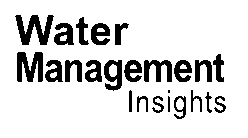In an era where water scarcity and environmental pressures are escalating, innovative solutions are crucial for sustainable water management. A groundbreaking study published recently offers a compelling glimpse into the future of water reuse, aligning perfectly with the circular economy principles championed by the European Commission. The research, led by Dominika Szołdrowska from the Mineral and Energy Economy Research Institute of the Polish Academy of Sciences in Kraków, explores the potential of rainwater harvesting (RWH) as a viable alternative for domestic and irrigation purposes.
Szołdrowska’s study, published in Desalination and Water Treatment (translated from Polish as Desalination and Water Purification), delves into the practicalities of collecting and reusing rainwater. The research underscores the importance of integrating RWH with advanced treatment technologies to maximize its benefits. “The filtration system we used effectively reduces suspended solids, which is crucial for preventing blockages in irrigation infrastructure,” Szołdrowska explains. This finding is particularly significant for the energy sector, where water is a critical resource for cooling and other processes.
The study’s methodology involved a comprehensive physicochemical analysis of collected and filtered rainwater. The results were promising, with rainwater quality parameters such as pH, redox potential, electrical conductivity, total dissolved solids, salinity, turbidity, and total phosphorus meeting the required standards for non-potable water applications. This opens up new avenues for water reuse in industrial settings, where non-potable water can be used for various processes, reducing the demand for fresh water.
One of the most intriguing aspects of this research is its alignment with the circular economy model. By reusing rainwater, industries can significantly reduce their water footprint, contributing to a more sustainable and resilient water management strategy. “Integrating RWH with appropriate treatment technologies is key to optimizing its reuse potential,” Szołdrowska notes. This integration could lead to substantial cost savings and environmental benefits, making it an attractive proposition for energy companies.
The implications of this research are far-reaching. As water scarcity becomes more pronounced, the need for innovative water management solutions will only grow. Szołdrowska’s work provides a roadmap for future developments in the field, emphasizing the importance of continuous improvement in filtration systems and long-term economic feasibility studies. “Future research should focus on improving filtration systems and assessing the long-term economic feasibility of RWH in different contexts,” Szołdrowska suggests.
For the energy sector, this research offers a glimpse into a future where water is used more efficiently and sustainably. By adopting RWH and advanced treatment technologies, energy companies can reduce their water consumption, lower operational costs, and enhance their environmental credentials. This shift towards a circular economy of water could revolutionize the way industries approach water management, paving the way for a more sustainable future.
As we stand on the brink of a water crisis, innovations like those explored in Szołdrowska’s study offer a beacon of hope. By embracing the circular economy principles and investing in sustainable water management practices, we can ensure a more resilient and water-secure future for all. The journey towards a circular economy of water has begun, and the energy sector is poised to play a pivotal role in this transformative shift.
